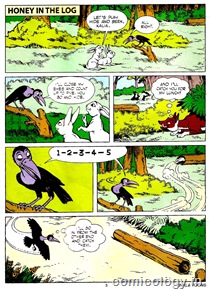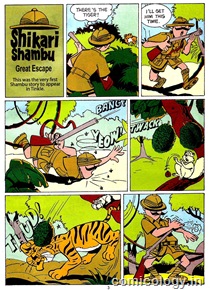 We are back with another Special post at Comicology, which is right in time with the event at present, the V-Day. With tons of news floating around with the so called Moral Police, and their crazy scenes flashing on screen disrupting the peoples lives, it should be said that India is yet to come to terms with the changing global order. All said and done I strongly feel that Love, also applies to the good feelings you share with your nears and dears, and need not always be your love interest. If some decide to showcase their love by marking a day in calendar, what’s the harm? So, my principle is give them their personal space, and get a life of your own.
We are back with another Special post at Comicology, which is right in time with the event at present, the V-Day. With tons of news floating around with the so called Moral Police, and their crazy scenes flashing on screen disrupting the peoples lives, it should be said that India is yet to come to terms with the changing global order. All said and done I strongly feel that Love, also applies to the good feelings you share with your nears and dears, and need not always be your love interest. If some decide to showcase their love by marking a day in calendar, what’s the harm? So, my principle is give them their personal space, and get a life of your own.

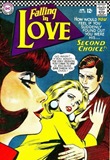 Just in case, if you are wondering what does Comicology has to do with this topic, hold-on, as I here we have a topic which is going to toe closely with the V-Day concept. If we had been living in Western worlds (and esp. in 80’s), then I could have used some Love based Comics to mark the occasion (like the ones next, not that I like them). Since, we live in a more conservative and cultured country, our topic for the post, is a different take on V Day, with Comics based on Celebrities. Isn’t making Comics based on living celebrities is actually a way of expressing love towards their real persona? Well with that context let’s move on to the post.
Just in case, if you are wondering what does Comicology has to do with this topic, hold-on, as I here we have a topic which is going to toe closely with the V-Day concept. If we had been living in Western worlds (and esp. in 80’s), then I could have used some Love based Comics to mark the occasion (like the ones next, not that I like them). Since, we live in a more conservative and cultured country, our topic for the post, is a different take on V Day, with Comics based on Celebrities. Isn’t making Comics based on living celebrities is actually a way of expressing love towards their real persona? Well with that context let’s move on to the post.
Fellow comicologist Aalok, also adds that a comics named “Fort” had published one shot romantic stories in India. I should admit I have never seen any of those issues so far, probably intimating that it was not wide-spread.
Using Celebrities in Comics, have long been in practice. Obviously, the American Genre, which introduced new themes and concepts to Comics as a whole, have had made quite a few comics on the living celebrities, and continue to do so.

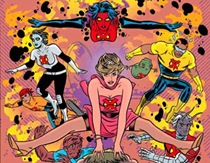


Even though they claim to have conceptualized only as a spoof, and in some cases parody, some of them were in poor taste,and in most cases they were intended to cash on the popularity of the celebrity. But, there was a clear line; in the fact that, they were all mostly one-shots, and weren’t planned as a full-blown series (at least to start of with).
(Pics Courtesy: cracked.com)
But, here in India, we are so generous that we consider our Celebrities, especially the Movie & Sports stars, as something bigger than life. So, there was no surprises that a handful of initiatives, were taken on to immortalize few of those loved ones into Comics. Let’s look at some of those famous(?!) attempts in that process.
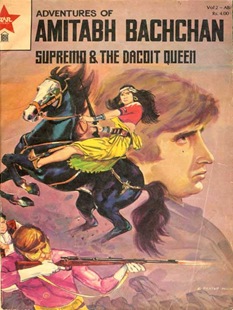 Supremo: The Adventures of Amitabh Bachchan (1982)
Supremo: The Adventures of Amitabh Bachchan (1982)
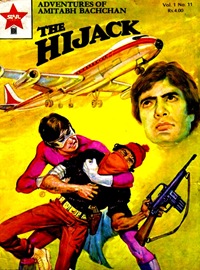 The Bollywood Super-Star Amitabh Bachchan (or Big B as he is fondly called), at the peek of his acting career, was conceptualized as a Super-Hero in disguise, named Supremo, in his own comic series, by Gulzar, another Bollywood celebrity himself, known for his songs and poems.
The Bollywood Super-Star Amitabh Bachchan (or Big B as he is fondly called), at the peek of his acting career, was conceptualized as a Super-Hero in disguise, named Supremo, in his own comic series, by Gulzar, another Bollywood celebrity himself, known for his songs and poems.
Gulzar wrote the scripts for the Supremo comic series, which was published by India Book House (IBH), under their Star Comics banner. Pratap Mulik managed the artwork, by heading a team of artists who worked on the scripts together.
Supremo wears a skin-tight Costume in Pink, with a Air-Marshal like face goggles, to hide his original identity. To top it all, the initial page even carried a personal hand-written request from Mr.Bachchan, requesting the readers to keep his identity as a "secret".
One saving grace, though was that Supremo didn’t have any so-called super-powers. He had the combination of strength and agility to defeat his human adversaries, and intelligence to get out of traps laid for him. So there was never a chance for him being shown stopping Trains, carrying Aeroplanes. We were saved, at least to that extent.

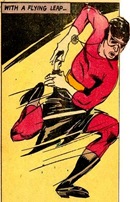
 At over 6 feet, Bachchan was indeed a subject worth to talk about, but did he deserve his masked hero status? especially when everyone knew his real identity.
At over 6 feet, Bachchan was indeed a subject worth to talk about, but did he deserve his masked hero status? especially when everyone knew his real identity.
That’s one for a worthy debate.
In short, even if the Big B fans were not made happy, with this short-lived comic series, at least Mr.Bachchan himself would have been a happy soul to see him being pictured in Comics.
The picture where he holds the comic, was when the owners of the cherished collection met him on a production set. Read more about it from their own account, by clicking here. And also another post over here, which talks about how the duo found this issue. Talks much about the craze this Bolly star, had during the peak of his career. No wonder he had a comic title on his name.

 Kapil Dev: Adventures of a Cricketer (1982)
Kapil Dev: Adventures of a Cricketer (1982)
The next Indian Superstar, was obviously had to be picked up from the second biggest Indian media, Cricket (In India, it isn't merely Sports, for the unknown). Kapil Dev, who was considered one of the all time great all-rounder in this form of sport, was also tried as a Hero in Comics.
Although, this was initially made as a Three One-Page advertisement articles for BSA SLR brand Bi-Cycles in India, the plans were there to be featured him as full-fledged comic character, closely following his real-life exploits on the cricketing field.
The one-page advertisements were often featured in the back-cover of erstwhile Indrajal Comics (from the house of Times of India), very regularly. But the concept never took center stage, and it petered out real quickly.
So, whether or not it would have become an success, was never known to any Comics fans. But I presume that it would have earned reasonable success, for the reason that Kapil was supposed to be portrayed only with his real-life persona, and his life as Cricketer, unlike the other gimmicks things which were attached to the former Supremo.
Kapil was almost an Ad Exclusive Comic cricket star, as he was involved with another full-length comic issue, this time to promote the Action Shoes brand, for which he was an Ambassador then. The book was titled Action Grah Ke Waasi (a Hindi title, which literally means “The Citizen of Action Planet”), which was published by Diamond Comics in India. The book was largely distributed as an Ad feature, so it didn’t reach all sects, so I couldn’t grab any scans for the same. Thanks again to Aalok for alerting me on this issue.
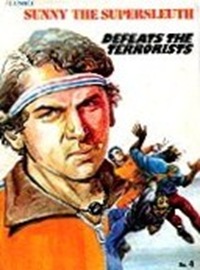 Sunny The Supersleuth: The Adventures of Sunil Gavaskar (1984)
Sunny The Supersleuth: The Adventures of Sunil Gavaskar (1984)
The loss of Kapil Dev, was the gain of another cricket team-mate of his,
Sunil Gavaskar, as it was his time to share the limelight. Gavaskar, who held many batting world records during his lengthy and illustrious career, was feared and respected the world over for his batting prowess. Especially when the fiery, tall, fast bowling legends walked the face of Cricket, during his era. He was considered a hero then, so no surprises when he was picked to don the next superhero role, albeit in Comics. (Pic Courtesy: TimeOUtMumbai.net)
It was the brainchild of Bharat and Shalan Savur, couples and full-time journalists, who were actually inspired by Bachan’s Supremo act, and wanted to create a Cricket fiction (“Cri-fi” as they named it). The artist for the series was Prabhakar Wairkar, who was chosen among a list of commercial artists. They decided to name the character "Sunny The Supersleuth" (sleuth synonyms with Detective). The series was distributed by erstwhile India Book Distributors (IBD). I couldn’t get hold of any sample pages of the interior artwork, but going by the cover art I believe they were done with a professional touch.
But what made the 5 ft 5 in persona to be touted as a Superhero, first-up. To know more, here is an excerpt from an interview with Bharat Savur, by Narayan Radhakrishnan, a new Comicologist from Kerala (who actually suggested me initially to blog on this topic at Comicology, thanks to him, and for his valuable info about Sunny Comics)
“Shalan and I were both into full-time journalism [in the early to mid-80s]; Shalan with Savvy and I with Debonair. So, the comic-book project was, of necessity, an after-office hours one. Sunil Gavaskar’s consent was obtained first over the phone and then in person. Fortunately, Sunil and I had known each other since our St.Xavier’s College days. And had adopted parallel paths since then. Paths that crossed and blended – Sunil, of course, as a reputed Test cricketer; me, as a sports journalist in print and on TV [Bombay Doordarshan’s Sports Round Up.]. Being in touch on and off must have helped. For Sunil said, “Yes,” immediately. Alongside, Shalan already had a penchant for fiction—contributing short stories for children to publications like Bal Vihar [Chinmaya Trust]; Children’s World and even Eve’s Weekly. Thus, our quest to be the world’s first cri-fi comic book authors had a firm base.”
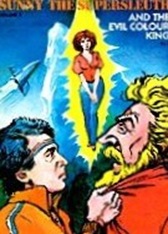 Sunny is shown as a superhero who battled cricketers from Bandookstan (parody?) and England on the field and, between games, took on evil magicians who lived beyond the outer range of the Himalayas. Wasn’t it little too much for a Cricketer? While some of his allies in the comics were named on the real Indian crickets, like Shashtri, Kirmani, etc., the foreign players were named differently, like Gotham for Botham, Usman for Imran and Bower for Gower. Obviously they didn’t have the freedom to represent other cricketers in a commercial venture, without their permission, which wouldn’t have been a problem with understanding locals. Surprisingly, his another team-mate, Kapil Dev, didn't make any appearance in the Comics. The professional and personal rivalry between them is well documented, so that is understandable too.
Sunny is shown as a superhero who battled cricketers from Bandookstan (parody?) and England on the field and, between games, took on evil magicians who lived beyond the outer range of the Himalayas. Wasn’t it little too much for a Cricketer? While some of his allies in the comics were named on the real Indian crickets, like Shashtri, Kirmani, etc., the foreign players were named differently, like Gotham for Botham, Usman for Imran and Bower for Gower. Obviously they didn’t have the freedom to represent other cricketers in a commercial venture, without their permission, which wouldn’t have been a problem with understanding locals. Surprisingly, his another team-mate, Kapil Dev, didn't make any appearance in the Comics. The professional and personal rivalry between them is well documented, so that is understandable too.
There were a total of 3 books released on this series, and after the initial euphoria petered out, the publishers pulled the plug out of the series; the 4th and the last in the series, was serialized in a some newspapers across India.
The only saving grace, on the entire episode, was that despite the shortcomings, the Savurs did have a great love towards the Comics genre, as it is highlighted in the closing notes of Bharat’s Interview.
“Looking back now, must say it was great fun conceiving and creating Sunny the Supersleuth. Perhaps, we were a generation ahead of our times. We believed then—even more so now—that comic-books are the right medium for India. Still a semi-literate country with a new ‘instant’ generation with a short attention span, the combination of words and visuals that comic-books bring have an ‘instant’ compelling appeal. We put this concept into practice by creating The World in Pictures.”
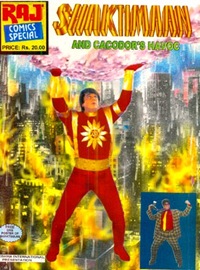 Shaktimaan: The Adventures of Mukesh Khanna (1997)
Shaktimaan: The Adventures of Mukesh Khanna (1997)
If Movie and Cricket Stars can make it into Comics, why not a TV Star? That what happened when Mukesh Khanna, known for his legendary role as Bheesm Pitamaha in Mahabharata TV Series (which aired on Doordarshan DD1, a state owned TV channel in India, on every Sundays), decided to turn Superhero himself, in the next full blown TV serial on the same channel.
He brought up the concept “Shaktimaan”, which is actually a imitation over the Superman character itself. Shaktimaan was pictured as a Superhero having super strengths, fighting the evil of darkness, by harnessing the mysterious powers within a human body, by meditation, and practice. His alter ego is a Newspaper photographer, and shares a love interest towards fellow Newspaper journalist.
Doesn’t it sound all the more familiar? Judgment is at your disposal.
Well, despite its copy-cat concept, and the visibly ageing Mukesh Khanna donning the lead role, the series was a hit among children, and generated a huge fan following for the star, among kids, obviously. I remember that one of my nephew actually wanted to get a gift of Shaktimaan costume for his birthday, and we tried hard and long in vain to get the same, as they were out-of-stock always. I still make fun of him (now in his Teens), for having a wish of that sort in his tender days, with his obvious discomfort.
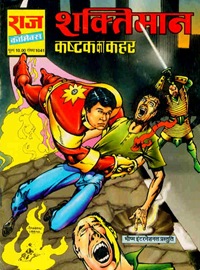 No wonder, Khanna decided to merchandise the brand name he garnered, by introducing Shaktimaan in Comics, under his corporate entity “Bheesm International”. Probably the first time the Celebrity himself wanted to launch a Comics on him, while the previous two attempts were actually made by other fans and friends of the celebrities.
No wonder, Khanna decided to merchandise the brand name he garnered, by introducing Shaktimaan in Comics, under his corporate entity “Bheesm International”. Probably the first time the Celebrity himself wanted to launch a Comics on him, while the previous two attempts were actually made by other fans and friends of the celebrities.

Fellow comicologist Siv also adds that Shaktimaan was also released in Tamil. Obviously, that would have been from Diamond Comics, who are known to have one of the largest distribution network among comics publishers. But, it’s long since I remember seeing a Tamil version of any Diamond Comics. May be they wanted to cash in on Shaktimaan’s popularity, which during its run on DD, was also translated in Tamil in their regional channel.
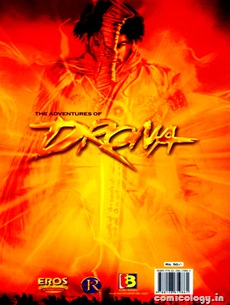 Drona: The Adventures of Abishek Bachchan (2008)
Drona: The Adventures of Abishek Bachchan (2008)
If Amitabh Bachan decided to have his own comic series, why not his son, Abishek Bachchan, an actor himself? So, he was the recent addition to the Celebrity Superhero list, when he was cast in the Bollywood movie, Drona. Unlike any of its predecessors, this time the Comic book form was launched as a prequel to the movie, obviously to generate a fan base. The concept which was originally pioneered in the American genre, was introduced in India by Euro Books, who Comicologists would know from their comic series launch in India like Biggles, Spirou and Fantasio, etc. which were detailed and discussed at Comicology before.
Drona is a different superhero, who is shown in an Artwork embodied Dhoti as a costume (isn’t that different?), but possesses supernatural powers, like coming back to life, even if killed during battles. His lady love in the movie was Priyanka Chopra (more about her later in our Part II), who also dons the role of the bodyguard to the superhero. Isn’t that new trend too? a Bodyguard to a Superhero himself. Well, Bollywood and its atrocities at times, deserves a special post on its own :)
 The one-off comic was scripted by Jaydeep Sarkar, and artwork was done by a team of artists, which is symbolic by the richness in the resultant output.
The one-off comic was scripted by Jaydeep Sarkar, and artwork was done by a team of artists, which is symbolic by the richness in the resultant output.
Enough said, the movie was a far cry for the wannabe superhero type, which was poorly scripted, and badly acted. Abishesk was a never a good actor (he continues to improve at snails pace), even though media’s promote him left, right, and center for being Big B’s son. His acting showed its true colours in the movie, where he was often seen like a man lost.
The movie went on to be the biggest flop-show of the year, and the comic franchise died along with it, with only a Prequel edition, to its credit. Thanks to Almighty, that we were saved from witnessing the flop concept in our beloved Comics. For those of who would like to collect this edition, for the sake of it, it is now available at all leading bookstores, and priced at INR 50, consisting of 32 pages. I own one for the same reason, but don’t expect others to follow the suit :).
In the age of graphic novels, it’s now belatedly obvious that the Savurs, and Gulzar, were pioneers in giving Comics a Contemporary Indian context. But at times, they were a whole lot of groups and individuals who were not impressed on these Comics, like myself at present.
The Best review about which could be exampled by Angena Parek in the Sunday Express in 1984 about Sunny and Supremo, while noting like: “These personality-oriented comics are a retrogressive step”. She further adds -
“The Indian psyche is very receptive to the personality cult and to make heroes out of ordinary people is not a difficult task in this country. These comics are reinforcing the tendency to attribute superhuman qualities to ordinary humans, in the same way that commercial Hindi films do.”
And with that closing note, we come to the conclusion of our post on the Indian based Superhero comic franchises. But, that wasn’t all. In between Shaktimaan and Drona, there were a host of other attempts to make Indian Super Heroes in Comics form. But, they were either shelved or delayed for various reasons. Let’s look at each one of them in our next Celebrity Comics Post. Bonus to that post will also be Indian Superhero Movies released in India in the past. Stay tuned as it will be On, very soon over at Comicology.
Just for a Preview of what’s in store for you in that post, here is a glimpse:
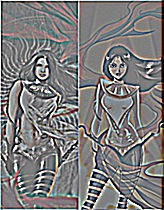
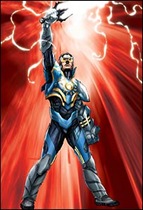

Hopefully, you would have found this post useful and fun reading, just like I felt while working on it. If so, why not leave your comments to let others know. Also, please do let me know if there was any other Super Hero Comics, which were missed out from this list. You could mail me or post it as part of your comment.
The Original post at this place was supposed to be the Muthu Comics latest issue review (I received my copy this Friday), but since to blog something in line with the V Day occasion, I hurried up this post in its place. The Muthu Comics review will be posted shortly.
Wish you all a Happy Week ahead. Have Fun & nJoY, while I will be back with another post very soon. Adios Amigos !



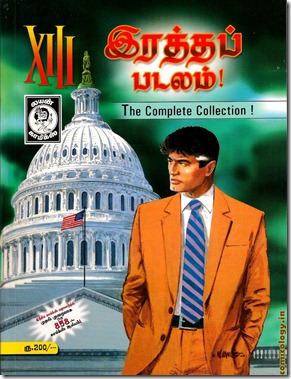

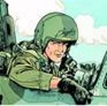 First up the order will be a known hero for Comicologists, the famous British Novels, Biggles, who was brought in comic format through one of the famed Franco-Belgian genre creators Francis Bergese. If you had been following Comicology regularly (which I am sure you would), then you would recall that we covered an exclusive post on the Biggles Indian debut through
First up the order will be a known hero for Comicologists, the famous British Novels, Biggles, who was brought in comic format through one of the famed Franco-Belgian genre creators Francis Bergese. If you had been following Comicology regularly (which I am sure you would), then you would recall that we covered an exclusive post on the Biggles Indian debut through 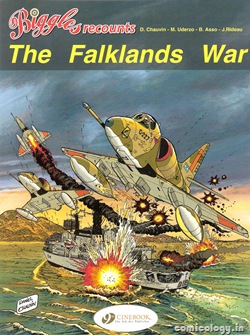
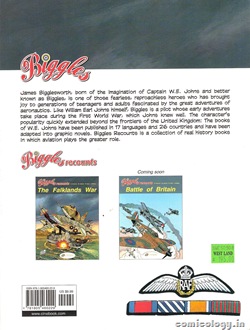

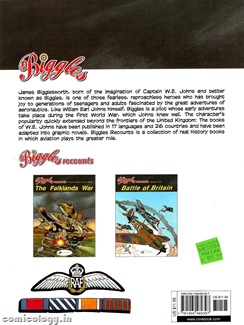
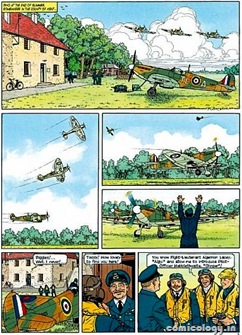 The second album on Biggles Recounts, is the Battle of Britain, where the story unfolds in the Spring of 1940. The Third Reich forces streamed into the north-west of France, after pushing through Sedan. France crumbled within 35 days. The Germans pressed their advantage and trapped the British Expeditionary Corps in a corner. English army managed to escape back to England. And the fate of the world was rested on the shoulders of a handful of men, the Pilots of RAF, where our fictional hero Biggles is placed in service. The story then unfolds his team’s adventures through these war torn times, which also interlinks with the real event about the Bombing of Germany in 1943-45.
The second album on Biggles Recounts, is the Battle of Britain, where the story unfolds in the Spring of 1940. The Third Reich forces streamed into the north-west of France, after pushing through Sedan. France crumbled within 35 days. The Germans pressed their advantage and trapped the British Expeditionary Corps in a corner. English army managed to escape back to England. And the fate of the world was rested on the shoulders of a handful of men, the Pilots of RAF, where our fictional hero Biggles is placed in service. The story then unfolds his team’s adventures through these war torn times, which also interlinks with the real event about the Bombing of Germany in 1943-45.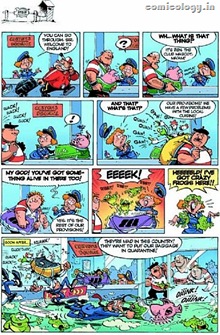 Make what you want out of this description text on the first title
Make what you want out of this description text on the first title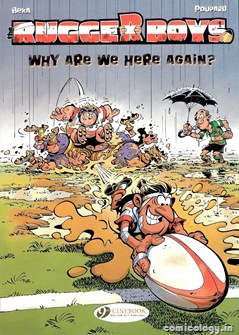
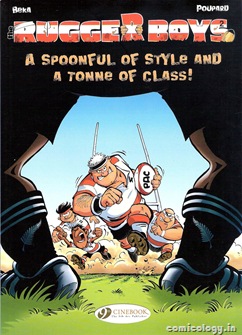
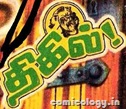 Moving on to this week, it is another attempt to rekindle the old memories, by bringing up erstwhile Tamil Comic series from the stable of Prakash Publishers (known for the long running Tamil Comics
Moving on to this week, it is another attempt to rekindle the old memories, by bringing up erstwhile Tamil Comic series from the stable of Prakash Publishers (known for the long running Tamil Comics  The Thirteenth Floor, was originally published in the British Horror Comics
The Thirteenth Floor, was originally published in the British Horror Comics 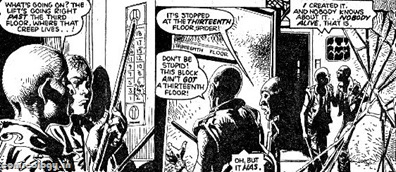 Max defecting the Wrong-Doers with its Illusional 13th Floor
Max defecting the Wrong-Doers with its Illusional 13th Floor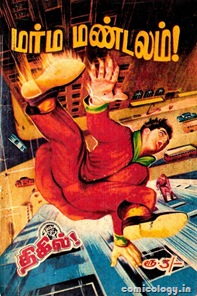
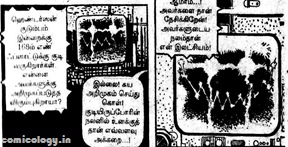 Max expressing his love towards Tenants
Max expressing his love towards Tenants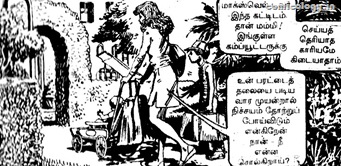 Scene 1: Moms Fun with Kid
Scene 1: Moms Fun with Kid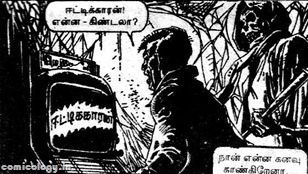 Scene 2: Debt Collector in Tamil
Scene 2: Debt Collector in Tamil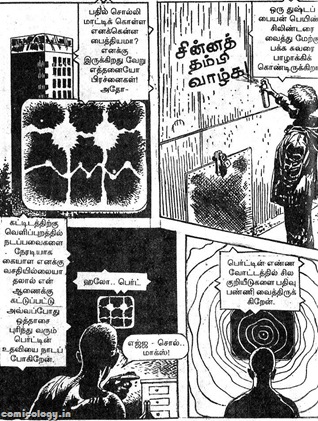 The Trouble-Kid with Paint Can
The Trouble-Kid with Paint Can 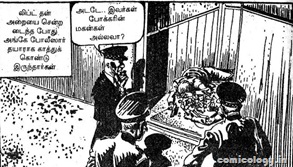 Police arrives at Scene, in the last story of the issue
Police arrives at Scene, in the last story of the issue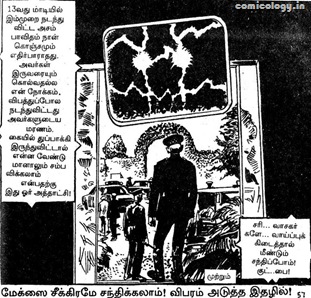 The End Scene with Editor claiming “More of Max”
The End Scene with Editor claiming “More of Max”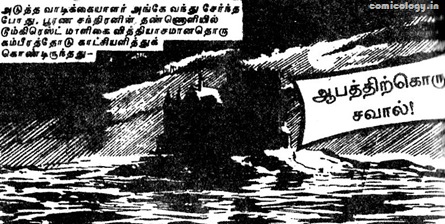 Supplement Story: Doomcrest Palace and its mysterious inmates
Supplement Story: Doomcrest Palace and its mysterious inmates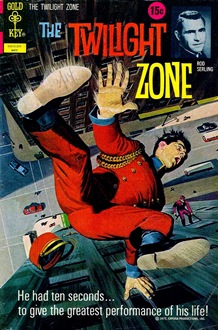
 If you had spent your childhood in India and in 80’s and early 90’s, then you are sure to get an euphoria of sensation when you hear the name of “
If you had spent your childhood in India and in 80’s and early 90’s, then you are sure to get an euphoria of sensation when you hear the name of “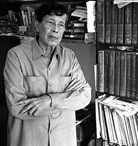 Dr.Anant Pai, who is fondly called as Uncle Pai, was a known figure in children's magazines, with his already well established
Dr.Anant Pai, who is fondly called as Uncle Pai, was a known figure in children's magazines, with his already well established 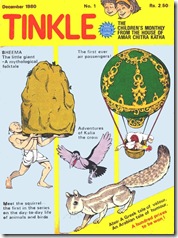
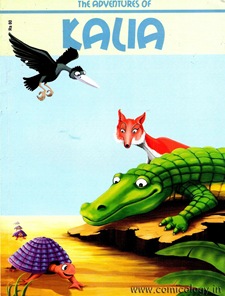 The first Tinkle Special, collects some of the favourite stories of Kalia, the Crow, which is considered a flagship character of Tinkle magazine.
The first Tinkle Special, collects some of the favourite stories of Kalia, the Crow, which is considered a flagship character of Tinkle magazine.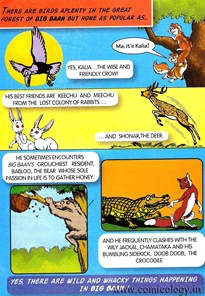 Kalia’s storyline are typically depicted as him saving his friends (and even strangers, sometimes) like Keechu-Meechu, Elephants, from the claws of the carnivorous Doob Doob and Chamataka. While the majority of the fans felt this as a heroic act, there were some fan base who rated Kalia as interfering busybody, snatching away food from the animals, for whom the nature had intended them as a rightful prey.
Kalia’s storyline are typically depicted as him saving his friends (and even strangers, sometimes) like Keechu-Meechu, Elephants, from the claws of the carnivorous Doob Doob and Chamataka. While the majority of the fans felt this as a heroic act, there were some fan base who rated Kalia as interfering busybody, snatching away food from the animals, for whom the nature had intended them as a rightful prey. 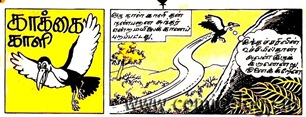 Kalia in Poonthalir as Kaakai Kaali
Kalia in Poonthalir as Kaakai Kaali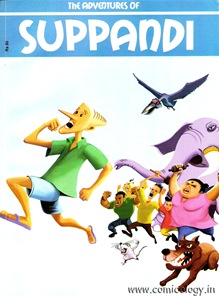
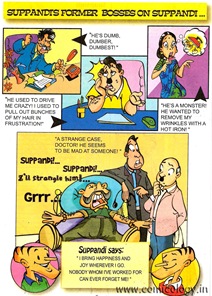 No wonder, Suppandi was an instant success with Tinkle readers, as they were able to relate him to every day common man found in their locality (no pun intended). Readers were amused and Tinkle’s editor Fernandes states that they started receiving a lot of story contributions from Suppandi fans, and the editors realised that the simpleton with the funny, rectangular head, had come to stay. Suppandi is loved across genre, by children's, teens, and adults.
No wonder, Suppandi was an instant success with Tinkle readers, as they were able to relate him to every day common man found in their locality (no pun intended). Readers were amused and Tinkle’s editor Fernandes states that they started receiving a lot of story contributions from Suppandi fans, and the editors realised that the simpleton with the funny, rectangular head, had come to stay. Suppandi is loved across genre, by children's, teens, and adults. 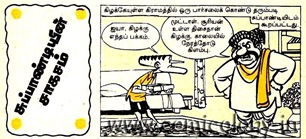 Suppandi in Poonthalir as Suppaandiyin Saagasam
Suppandi in Poonthalir as Suppaandiyin Saagasam
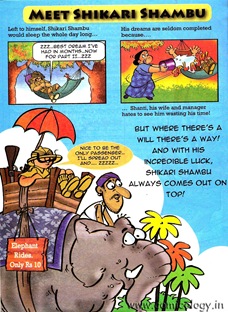 One of the reasons for the popularity of Shikari Shambu, was due to the comical illustrations of the artist, Vasant Halbe. Halbe, who was a freelancer at Tinkle that time, had impressed the editorial team with his earlier works. One he was confirmed officially as the artist for the series, he showcased his character sketches, of which a drawing of Shikari with his Topi (hat) pulled down over his eyes, caught everyone’s attention. The sketch went on to be the among the flagship character of Tinkle.
One of the reasons for the popularity of Shikari Shambu, was due to the comical illustrations of the artist, Vasant Halbe. Halbe, who was a freelancer at Tinkle that time, had impressed the editorial team with his earlier works. One he was confirmed officially as the artist for the series, he showcased his character sketches, of which a drawing of Shikari with his Topi (hat) pulled down over his eyes, caught everyone’s attention. The sketch went on to be the among the flagship character of Tinkle. Shambu in Poonthalir as Vettaikkaara Vembu
Shambu in Poonthalir as Vettaikkaara Vembu